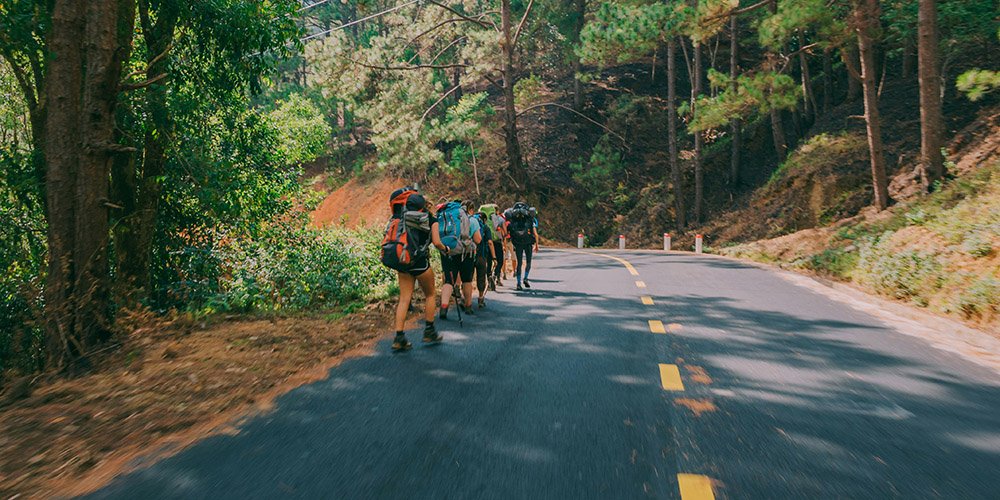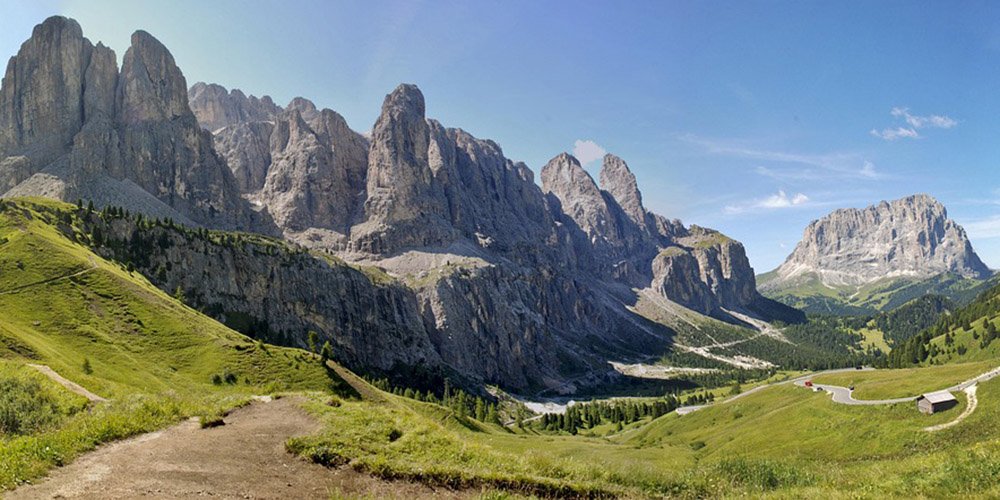Average Hiking Speed: How to Calculate and Optimize Your Pace
If you’ve ever wondered how long it will take to finish a hike, knowing your average hiking speed can make all the difference. Whether you’re planning a day hike or a multi-day adventure, understanding your pace helps you estimate arrival times, prepare adequately, and avoid unexpected challenges on the trail.
Hiking speed isn’t one-size-fits-all—it varies depending on terrain, fitness level, and even weather conditions. This guide explores what “average hiking speed” means, the factors that influence it, and how you can calculate and improve your pace for a safer, more enjoyable outdoor experience.
What Is the Average Hiking Speed?
On average, most hikers travel at a pace of 2 to 3 miles per hour (3 to 5 kilometers per hour) on flat, well-maintained trails. However, this figure is just a general estimate, as hiking speed can vary widely depending on individual and environmental factors.
For example, experienced hikers with good physical conditioning may sustain speeds closer to 3 mph or higher on moderate trails, while beginners or those carrying heavy packs might move closer to 2 mph or less. Hiking groups tend to move at the pace of their slowest member, and trail conditions—like steep inclines or uneven terrain—can slow even the fastest hikers.
Understanding your personal hiking speed allows you to plan your trips more effectively, factoring in rest breaks, elevation changes, and daylight hours to ensure you reach your destination safely and comfortably.

Factors Influencing Hiking Speed
Hiking speed is affected by a variety of factors, many of which are beyond your control. However, being aware of these influences can help you set realistic expectations and make adjustments as needed.
Terrain and Trail Conditions
The type of trail you’re on plays a huge role in determining your pace. A flat, smooth path allows for faster movement, while rocky, muddy, or overgrown trails will naturally slow you down. Stepping over obstacles or navigating tricky footing requires more time and effort, reducing your overall speed.
Elevation Gain and Loss
Climbing uphill slows most hikers significantly. Steep ascents demand extra energy, while descents, though faster, can be taxing on your knees and require careful footing to avoid slips. Naismith’s Rule offers a useful guideline: add an extra hour for every 2,000 feet (600 meters) of elevation gain to your estimated hiking time.
Weather Conditions
Weather can be a hiker’s best friend or worst enemy. High temperatures can lead to slower movement due to fatigue, while rain, wind, or snow can make trails slippery and hazardous. Even bright sunlight might encourage more frequent breaks, especially on exposed trails.
Pack Weight
The heavier your backpack, the slower your pace. Carrying extra weight increases physical strain, especially on uphill sections. Minimizing your load by packing only essentials can significantly improve your speed and overall comfort.
Fitness Level and Experience
Physical conditioning is one of the most controllable factors influencing hiking speed. Hikers who regularly exercise and build endurance are often able to maintain faster, more consistent paces. Experience also matters—seasoned hikers are more adept at managing their energy and navigating difficult terrain efficiently.
Understanding these factors can help you better predict your pace and tailor your preparation to the conditions of your next hike.
Methods to Calculate Your Average Hiking Speed
Knowing your average hiking speed can help you plan better and avoid surprises on the trail. Here are two effective methods to calculate it:
Manual Calculation
The simplest way to calculate your hiking speed is by timing yourself over a known distance. Find a trail segment with a measured distance (like one marked on a map or with trail signs) and record the time it takes you to complete it. Use this formula to determine your speed:
Speed = Distance ÷ Time
For example, if you hike 3 miles in 90 minutes, your speed is 2 miles per hour.
Using Technology
Modern hiking gadgets and apps make tracking your speed easier than ever. Devices like GPS watches and fitness trackers can measure your pace in real-time, while apps like AllTrails or Gaia GPS provide detailed stats, including speed, elevation gain, and rest time. These tools are especially useful for monitoring your progress over varied terrain or long distances.
By regularly measuring your hiking speed, you can better anticipate how long future hikes will take and identify areas where you can improve.

Estimating Hiking Time for a Given Distance
Once you know your average speed, estimating the time required for a hike becomes much easier. For more precise planning, you can use tools like Naismith’s Rule and adjust for personal factors.
Applying Naismith’s Rule
Naismith’s Rule provides a straightforward formula for estimating hiking time:
- Allow 1 hour for every 3 miles on flat terrain.
- Add 1 hour for every 2,000 feet of elevation gain.
For example, if you’re hiking 6 miles with 1,000 feet of elevation gain, you can estimate:
- 6 miles ÷ 3 miles/hour = 2 hours for distance.
- 1,000 feet ÷ 2,000 feet/hour = 0.5 hours for elevation gain.
- Total estimated time = 2.5 hours.
Adjustments for Personal and Trail Factors
While Naismith’s Rule is a good starting point, you should modify your estimate based on:
- Your fitness level: If you’re slower than the average hiker, add extra time.
- Trail conditions: Steep, rocky, or overgrown paths require more time.
- Breaks and rest stops: Include additional time for hydration, photos, or enjoying the view.
With these adjustments, you can create a more accurate plan tailored to your unique pace and the trail’s challenges.
Tips to Improve Your Hiking Speed
If you want to cover more ground or maintain a steadier pace on the trail, these practical tips can help:
Build Physical Fitness
Strength and endurance training are key to improving hiking speed. Focus on exercises like walking, jogging, and stair climbing to boost leg strength and cardiovascular fitness. Adding weighted backpacks during training hikes can also prepare you for real-world conditions.
Lighten Your Pack
The less weight you carry, the faster you’ll move. Reevaluate your gear and prioritize lightweight, multi-purpose items. Ask yourself: “Do I really need this?” before packing.
Wear the Right Gear
Proper footwear can make a huge difference. Invest in lightweight, comfortable hiking shoes or boots designed for the terrain you’ll encounter. Additionally, choose breathable clothing that prevents overheating and minimizes chafing.
Pace Yourself
Start at a moderate speed that you can sustain over long distances. Trying to go too fast at the beginning can leave you fatigued later in the hike. A steady, consistent pace is often the most efficient.
Study the Trail
Familiarity with the trail can save time and energy. Research the route in advance to anticipate challenges, like steep climbs or stream crossings, and plan your pace accordingly.
By incorporating these tips, you’ll not only hike faster but also enjoy the experience more, knowing you’re prepared for whatever the trail brings.

Importance of Pacing in Hiking
Maintaining the right pace on the trail is about more than just reaching your destination quickly—it’s about safety, energy management, and enjoying the journey.
Safety Considerations
Hiking too quickly can lead to fatigue, increasing your chances of tripping or making mistakes on difficult terrain. On the other hand, moving too slowly might leave you racing against daylight or unprepared for changing weather conditions. Finding a pace that works for you ensures you can stay focused and confident throughout the hike.
Energy Conservation
A steady pace is the key to avoiding burnout on longer trails. Instead of starting with a burst of energy that leaves you exhausted halfway through, aim for a rhythm that allows you to keep moving comfortably for hours. This balance helps you preserve energy for challenging sections and enjoy breaks without feeling rushed.
Enjoying the Hiking Experience
Hiking isn’t a race—it’s about immersing yourself in nature. By pacing yourself, you’ll have the time and energy to appreciate the beauty around you, whether it’s a panoramic mountain view, the sound of a babbling brook, or the wildlife along the trail. A well-maintained pace allows you to stay present and make the most of your adventure.
Conclusion
Understanding your average hiking speed is a powerful tool for planning and enjoying your outdoor adventures. It helps you estimate hiking times, anticipate challenges, and tailor your approach to match your fitness level and the trail’s conditions. By calculating your pace, using tools like Naismith’s Rule, and applying practical tips to improve, you can hike smarter and safer.
Remember, hiking isn’t just about how fast you can go—it’s about the journey, the connection with nature, and the memories you create along the way. So, whether you’re a fast-paced trailblazer or a steady explorer, find the speed that works for you, and enjoy every step of the adventure.








